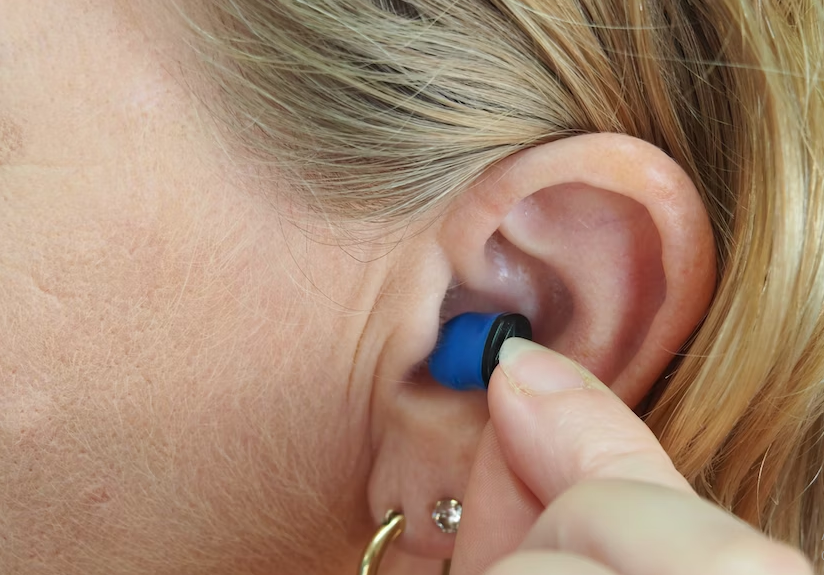The human body is indeed the most advanced machine on this earth, with each part working in harmony to maximize functionality. However, it’s often the core organs that steal the entire spotlight – think heart, lungs, brain, etc.
Seldom do we ponder upon the sense organs like the ear. Did you know that the human ear is not only responsible for hearing but also our sense of balance? It’s almost as if this organ performs its task so well that those with a 10/10 auditory sensation often take it for granted.
Unfortunately, it’s quite easy to wreak havoc on your hearing, especially in today’s modern society. The World Health Organization (WHO) estimates that 1 in every 4 people will face auditory issues by 2050 (and the numbers are no better today). Why is this the case?
It is because of some unknown (yet preventable) contributing factors. This article will delve deeper into the five unusual or not-so-known causes of hearing loss.
1. The Overuse/Misuse of Gadgets
You must be wondering how this is an unusual cause of hearing loss. Most of us have been warned at least once during our lifetime (especially from concerned parents) that overuse of headphones and loud music can impact hearing.
However, most people seldom live circumspectly, as is evident from their weekend movie marathons and audiobook listening practices. The WHO recommends a daily permissible limit of 85 decibels up to eight hours maximum, which would be equivalent to the sound of heavy traffic or a juicer grinder.
The sad truth is that most ear gadgets allow at least 100 decibels of sound to reach the eardrum. Dr. Anand Warrier is an interventional neurologist working at the Zurich University Hospital. He discloses his concerns, saying that such high decibels of sound can permanently affect hearing even when exposed for short periods (more so if metal music is involved).
The problem is huge with advanced headsets capable of blocking out all background noise. You may consider the audio to be clear, crisp, and even appealing, but your ears are not designed for such unnatural sound settings. The damage is worse among children and adolescents as they are usually addicted to headsets.
2. Frequent Use of Q-Tips for Ear Wax Removal
Is reaching out for a cotton Q-tip for ear wax removal second nature to you? This practice may be doing you more harm than good. This is because a Q-tip tends to remove all of the ear wax.
The truth is your body produces ear wax for good reasons. It acts as a lubricant to moisturize the ear and also protects it against foreign particles like dust. The dirt-trapping feature of ear wax protects the ear canal from bacterial overgrowth.
What the cotton Q-tip generally does is that it pushes the ear wax further toward the inner canal. If that happens, the hardened ear wax can damage your eardrum, even leading to hearing problems or loss. The good news is that ears are a self-cleaning organ and do not require you to be their housekeeper!
In most cases, the excess ear wax dries out or flakes and drops out of the ear canal on its own. Only if you face any issues like pain or a tingling sensation do you need to check with a good ENT.
3. Certain Medications
This one is also new for many people because there aren’t too many medicines out there that cause hearing loss. In a lot of cases, the hearing problem disappears once you stop taking the particular pill, or only large quantities (8 to 12 tablets a day) would cause hearing loss.
However, one medication that has been notorious in this area in recent years is Tepezza or Teprotumumab. This medication received FDA approval for the treatment of an autoimmune inflammatory condition called thyroid eye disease.
Over the past years, several people have come forward to file a Tepezza lawsuit. The National Library of Medicine confirmed the link when patients with thyroid eye disease were treated with Tepezza. Despite significant improvement in double vision, 85% of the patients complained of auditory side effects.
The most common issues were tinnitus or a ringing sensation in the ear, along with sensorineural hearing loss. But when it comes to the litigation process, this lawsuit is still in its nascent stages, as per TorHoerman Law. The Judicial Panel for Multidistrict Litigation (JPML) is still deciding whether case consolidation is necessary. Even so, individual plaintiffs are receiving relevant compensation for their injuries.
4. Long-Term Fluid Accumulation Due to Infections
Ear fluid accumulation or otitis media with effusion (OME) is a painful condition that normally affects children, given their developing anatomy. This condition can take place due to seemingly innocent reasons like migraines, allergies, or a viral infection.
This is precisely why parents seldom pay attention to the lurking danger. The ear is designed in a way to hold air in the middle ear (behind the eardrum). This region is connected to the back of the nose through the Eustachian tube. The Eustachian tube plays a key role in maintaining pressure at par with the external world.
In case of fluid accumulation behind the eardrum, the patient develops an ear infection. If neglected for extended periods (the condition may last for a few days or weeks), sound conduction is affected, leading to loss of hearing. Hence, no ear infection must be taken lightly.
Summing Up
Up until the past few decades, hearing loss was considered to be a natural part of aging. Today, the numbers are shocking (around 20% of the world population!) as younger people develop this problem due to unnatural reasons.
It is extremely crucial to raise awareness among young people about the dangers of developing permanent hearing loss. They should be advised against exposing themselves to loud music. Besides that, the use of cotton swabs should be restricted, and ears must be kept dry as far as possible.
On a final note, it is also important to reduce stress levels. High chronic stress affects the oxygen supply to the ears’ fragile cells, exposing them to the possibility of sudden or gradual hearing loss.



